La Crosse WS-7075UF User manual
- Category
- Weather stations
- Type
- User manual
This manual is also suitable for

WS-7075U
Wireless 433 MHz
Radio-controlled Weather Station
Instruction Manual

2
TABLE OF CONTENTS
Topic Page
Inventory of Contents/Additional Equipment 3
About WWVB 3-4
Quick Set-Up Guide 4
Detailed Set-Up Guide
Battery Installation 4-5
Program Mode
Function Keys 6
12/24 hour Time Setting 6
Time Zone Setting 6-7
Daylight Saving Time Setting 7
Time Setting (WWVB & Manual) 8-9
Setting Day, Date, and Year 9-10
Selecting °F or °C
10
Setting the LCD Contrast 10
Features
Weather Forecast Icons 11-12
Indoor Temperature, Humidity, & Comfort
Level Indicator
12
Outdoor Temperatures 13
Minimum & Maximum Records (Indoor,
Outdoor, & Resetting)
13-14
Alarm (Setting, Snoozing, & Stopping) 14-15
Additional Remote Control Sending Units
(Set-Up, Viewing, & Operation)
15-16
Mounting 17-18
Troubleshooting 19
Maintenance & Care 20
Specifications 21
Warranty Information 22

INVENTORY OF CONTENTS
1. The Weather Station (Figure 1).
2. One TX3U Remote Control Sender with mounting bracket (Figure 2).
3. Three each, ½” Philips screws.
4. One strip double-sided adhesive tape.
5. Instruction Manual and Warranty Card.
ADDITIONAL EQUIPMENT (not included)
Holder
Mounting
Bracket
Figure 2
Outdoor LCD
Indoor LCD
Forecast LCD
Date LCD
Time LCD
Figure 1
1. Two, fresh AA 1.5V batteries.
2. Two, fresh AAA 1.5V batteries.
3. One, Philips screwdriver.
4. One, Flat screwdriver.
ABOUT WWVB (Radio Controlled Time)
The NIST (National Institute of Standards and Technology—Time and Frequency
Division) WWVB radio station is located in Ft. Collins, Colorado, and transmits the
exact time signal continuously throughout the United States at 60 kHz. The signal
can be received up to 2, 000 miles away through the internal antenna in the Weather
Station. However, due to the nature of the Earth’s Ionosphere, reception is very
limited during daylight hours. The Weather Station will search for a signal every
night when reception is best. The WWVB radio station derives its signal from the
NIST Atomic clock in Boulder, Colorado. A team of atomic physicists is
continually measuring every second, of every day, to an accuracy of ten billionths of
3

a second per day. These physicists have created an international standard,
measuring a second as 9,192,631,770 vibrations of a Cesium-133 atom in a vacuum.
QUICK SET-UP GUIDE
1. Insert two AAA batteries into the Remote Control Sender.
2. Insert two AA batteries into the WEATHER STATION.
3. Wait 5 minutes, or until the outdoor temperature is displayed in the
OUTDOOR LCD (Liquid Crystal Display).
4. Wait 6-10 minutes (in ideal reception conditions) for the WWVB time
to be displayed in the TIME LCD. If the WWVB takes longer to set,
you may manually set the time (see complete instructions), or you can
wait until after the weather station conducts its programmed search at
the ideal reception time period of 12:00am to 6:00am.
5. Mount the units, ensuring that all units are sending and receiving
signals.
Note:
The Remote Control Sender transmits a signal every 3 minutes; after
the batteries have been installed, the Weather Station will search for the
signal for a duration of 5 minutes. If there is no temperature reading in the
OUTDOOR LCD after 5 minutes, make sure the units are within range of
each other, or repeat the battery installation procedure.
DETAILED SET-UP GUIDE
I. BATTERY INSTALLATION
A. REMOTE CONTROL SENDER
1. Remove the mounting bracket. The bracket snaps on and off
easily.
2. Remove the battery cover, by
removing the Flathead screw
located on the backside of the
unit, in the lower-central position.
The rubber weather-seal creates a
tight seal for the battery cover,
and does not allow the battery
cover to fall away from the unit. Place the screw partially
Battery
Cover
4

back into its hole, and angle it slightly—so the threads grab
the battery cover. With the screw, pull the battery cover off.
3. Observing the correct polarity install 2 AAA batteries. The
batteries will fit tightly (to avoid start-up problems make sure
they do not spring free).
4. Check the LCD screen of the Remote Control Sender to see if
there is a temperature reading. If there is no reading, check
the polarity of the batteries or replace with new batteries.
5. Check to make sure that the rubber weather-seal is in place,
and replace the battery cover, screw, and mounting bracket.
B. WEATHER STATION
1. Remove the battery cover. To do
this, insert a solid object in the space
provided at the lower-central position
of the battery cover, then push up and
pull out on the battery cover.
Battery
Cover
2. Observe the correct polarity, and
install 2 AA batteries.
3. Replace the battery cover.
Note:
Immediately after the batteries have been installed, each
LCD (Liquid Crystal Display) will flash, and a tone will sound.
Within a few seconds the indoor temperature, indoor relative
humidity, and the weather icons (sun and clouds) will be
displayed. If not, then remove batteries for 10 seconds and
reinstall. If the outdoor temperature is not displayed within four
minutes, remove batteries from both units, wait 10 seconds, and
reinstall. The time will show -:-- and start searching for the
signal. If it successfully receives the time signal (usually at night),
it will display the correct time (default is Eastern).
5

PROGRAM MODE
Programming Note:
If 30 seconds is allowed to pass, or either the IN or
the OUT buttons are pressed during programming modes the unit will
confirm/set the last information entered—the display will stop flashing and
return to normal time-date readings. If you don’t leave the program mode
during the programming of sections III through VIII, you can advance to
step 3 of the next program setting. If you do leave the program setting (or
want to program a specific setting) follow each instructional step to
program that setting.
I. FUNCTION KEYS
The Secondary Buttons are located directly below the Primary Buttons, and
behind the La Crosse Technology shield on the face of the unit. To access
the Secondary Buttons: place a solid object in the slot (above the shield)
and gently pull out and down.
Secondary Buttons
Primary Buttons
II. 12 OR 24 HOUR TIME SETTING
1. Press and hold the SET button for 3 seconds, or until “12 h”
flashes in the DATE LCD.
2. Press the CH button to toggle between 12 and 24-hour time.
3. Press the SET button to confirm the 12/24-hour setting, and to
advance to Time Zone Setting.
III. TIME ZONE SETTING
The default time zone is EST, “-5hr” (Eastern Standard Time), to
change this setting:
1. Press and hold the SET button for 3 seconds, or until “12 h”
OR “24 h” flashes in the DATE LCD.
6

7
2. Press the SET button 1 more time to enter the Time Zone
setting mode. The default Time Zone “-5” will flash in the
DATE LCD.
3. Select your appropriate time zone using the CH button.
During selection of the Time Zone, the 3 letter abbreviations
for the time zones found in North America will flash across
the top of the TIME LCD. Observe the chart below, showing
the corresponding abbreviations, time zones, and codes.
TIME ZONES
GMT 0
Atlantic -4
EST; Eastern -5
CST; Central -6
MST; Mountain -7
PST; Pacific -8
ALA; Alaska -9
HAW; Hawaii -10
Note:
There are more time zones represented by numbers than there are
represented by 3 letter abbreviations. If you live in North America you
need only be concerned with the ones in the chart above.
4. Press the SET button to confirm, and advance to the Daylight
Saving Time setting.
IV. DAYLIGHT SAVING TIME (DST) SETTING
1. Press and hold the SET button for 3 seconds, or until “12 h” or
“24 h” flashes in the DATE LCD.
2. Press the SET button 2 more times to reach the DST selection
mode. “DST 1” is the default setting and will be flashing in
the DATE LCD.
3. Press the CH button to select “DST 0” or “DST 1.”
4. “DST 0” indicates that the feature is off and the WWVB will
not change times automatically. “DST 1” indicates that the
feature is on and the WWVB will change times automatically.

8
Note: Some locations (Arizona and parts of Indiana) do not
follow Daylight Saving Time, and should select “DST 0.”
5. Press the SET button to confirm and advance to the Time
setting mode.
V. TIME
There are two methods by which the time can be set:
A) Automatically via WWVB reception, or
B) Manually.
A. WWVB (Remote Control Time)
This method requires you to do nothing, except wait for the signal
to be received, and to select a time zone. Reception usually takes
approximately 6-10 minutes during optimal conditions. The best
conditions for reception is at night, between midnight and 6:00
am—when there is less atmospheric interference. To keep your
time as accurate as possible, the Weather Station conducts a
WWVB search every night between these hours, and overrides any
manually set time. The WWVB tower icon (appearing in the TIME
LCD) will flash when a signal-search is in progress, will remain
steady when the signal has been received, and nothing will be
displayed in all other situations. If the WWVB time has not been
received after 10 minutes of battery installation, you may manually
set the time or leave the time function alone (reception will occur
regardless).
B. MANUAL TIME SETTING
1. Press and hold the SET button for 3 seconds or until “12h”
flashes in the DATE LCD.
2. Press the SET button 3 more times (until the hour digit
flashes in the TIME LCD).
3. Press the CH button to change the hour. Press the CH button
once and the hour will increase by one, twice and the hour
will increase by two, etc.

9
4. Press the SET button to confirm the hour setting, and to
advance to the minute setting mode.
5. The minute digits should be flashing. Press the CH button to
change the minutes—increasing the minutes by increments of
1 with each press of the CH button.
6. Press the SET button to confirm the minutes and to advance to
the Day, Date, and Year setting mode.
Note:
In 12h mode, “PM” will appear to the left of the time
during PM hours. If the time is not within the PM hours, nothing
will be displayed. Be sure to set the time to the correct AM/PM
time to ensure automatic reception at optimal times.
VI. SETTING THE DAY, DATE, AND YEAR
1. Press and hold the SET button for 3 seconds, or until “12 h” or
“24 h” flashes in the DATE LCD.
2. Press the SET button 5 more times to reach the Weekday
setting mode.
Note:
“MO” (representing Monday) is the default setting for the
weekday, “1.1” is the default setting for the numeric month and
day, and “1999” is the default setting for the year. The day, date,
and year will be automatically set once the WWVB signal is
received. However, the day, date, and year can be manually set
and will flash respectively in the DATE LCD during manual
programming.
3. The weekday will be flashing in the DATE LCD, press the
CH button to change the weekday.
4. Press the SET button to confirm, and to enter the numeric-
month setting mode.
5. The numeric-month will be flashing in the DATE LCD. Use
the CH button to set to the current month.
6. Press the SET button to confirm the numeric-month, and to
enter the numeric-day setting mode.
7. The numeric-day will be flashing, use the CH button to set the
current day.

10
8. Press the SET button to confirm and to enter the year setting
mode.
9. The default-year will be flashing, use the CH to set the
appropriate year.
10. Press the SET button to confirm and to advance to the °F or °C
setting mode.
VII. SELECTING °F OR °C
1. Press and hold the SET button for 3 seconds, or until “12h” or
“24h” flashes in the DATE LCD.
2. Press the SET button 9 times to reach the °F or °C setting
mode.
3. “°F” is the default setting, and should be flashing in the
DATE LCD.
4. Press the CH button to shift °F to °C, and back.
5. Press the SET button to confirm your selection, and to
advance to the LCD contrast setting.
VIII. SETTING THE LCD CONTRAST
1. Press and hold the SET button for 3 seconds, or until “12h” or
“24h” flashes in the DATE LCD.
2. Press the SET button 10 more times to reach the LCD contrast
setting mode.
3. The default setting—“Lcd 5”—will flash in the DATE LCD.
4. There are 8 LCD contrast levels to choose from—“Lcd 0” is
the lightest, and “Lcd 7” is the darkest.
5. Press the CH button to toggle through the settings.
6. Press either the IN or OUT buttons to confirm all the settings
and to exit the manual-programming mode (or wait 15
seconds for the unit to automatically return to the normal
display mode).

FEATURES OF THE WS-7075U
11
I. WEATHER FORECAST
The weather forecasting feature is estimated to be 75% accurate. The
weather forecast is based solely upon the change of air pressure over time.
The WS-7075U averages past air-pressure readings to provide an accurate
forecast—creating a necessity to disregard all weather forecasting for 12-24
hours after the unit has been set-up, reset, or moved from one altitude to
another (i.e. from one floor of a building to another floor). In areas where
the weather is not affected by the change of air pressure, this feature will be
less accurate.
Forecast icon
Alarm icon
Satellite icon (indicates
outdoor transmission)
WWVB Tower Icon (indicates time
reception)
Weather Tendency Arrow
Comfort Level Indicator
A. WEATHER ICONS
There are 3 possible weather icons that will be displayed in the
FORECAST LCD:

12
Sunny—indicates that the weather is expected to improve (not that
the weather will be sunny).
Sun with Clouds—indicates that the weather is expected to be fair
(not that the weather will be sunny with clouds).
Clouds with Rain—indicates that the weather is expected to get
worse (not that the weather will be rainy).
The weather icons change when the unit detects a change in air
pressure. The icons change in order, from “sunny” to “partly
sunny” to “cloudy” or the reverse. It will not change from “sunny”
directly to “rainy”, although it is possible for the change to occur
quickly. If the symbols do not change then the weather has not
changed, or the change has been slow and gradual.
B. WEATHER TENDENCY ARROWS
Other possible displays in the FORECAST LCD are 2 weather
tendency arrows, one that points up (on the left side of the LCD)
and one that points down (on the right side of the LCD). These
arrows reflect current changes in the air pressure. An arrow
pointing up indicates that the air pressure is increasing and the
weather is expected to improve or remain good, an arrow pointing
down indicates that the air pressure is decreasing and the weather
is expected to become worse or remain poor. No arrow means the
pressure is stable.
II. INDOOR TEMPERATURE, HUMIDITY, AND COMFORT
LEVEL INDICATOR
The current Indoor Temperature (viewed on the left) and Relative Humidity
(viewed on the right) are displayed in the INDOOR LCD. The Comfort
Level Indicator is located at the center of the INDOOR LCD. The indicator
will display a happy face icon when the temperature is between 68°F and
79°F (20°C and 25.9°C), and the humidity is between 45% and 64%. A sad
face icon will be displayed when the temperature and humidity are outside
the mentioned ranges.

13
III. OUTDOOR TEMPERATURE
The outdoor temperature is viewed in the OUTDOOR LCD. When there is
more than one Remote Control Sender unit in operation, a “boxed” number
will appear to the right of the temperature. This indicates which Remote
Control Sender unit (1, 2, or 3) is currently displaying its data in the
OUTDOOR LCD. (This feature is explained in further detail in section
VI—Adding Outdoor Remote Control Senders).
IV. MINIMUM AND MAXIMUM TEMPERATURE RECORDS
The WS-7075U keeps a record of the MINIMUM and MAXIMUM
temperature, and the time and date of their occurrence—for both the indoor
and outdoor modes.
A. VIEWING THE INDOOR TEMPERATURE RECORDS
1. Press the IN button once. “MIN” appears in the upper-center
location of the flashing INDOOR LCD, indicating that the
minimum temperature (along with the humidity measured at
that time) and the time and date of occurrence are displayed.
The minimum records will display for 20 seconds.
2. Press the IN button again (once while “MIN” is still displayed,
twice otherwise). “MAX” appears in the upper-center
location of the flashing INDOOR LCD, indicating that the
maximum temperature (along with the humidity measured at
that time) and the time and date of occurrence are displayed.
3. While “MAX” is still displayed press the IN button again to
return to the current data display. Or you can wait 20
seconds, during either the minimum or the maximum readings,
and the unit will automatically return to current data readings.
B. VIEWING THE OUTDOOR TEMPERATURE
RECORDS
1. Press the OUT button once. “MIN” appears in the upper-
center location of the flashing OUTDOOR LCD, indicating
that the minimum temperature, and the time and date of

14
occurrence are displayed. The minimum records will display
for 20 seconds.
2. Press the OUT button again (once while “MIN” is still
displayed, twice otherwise). “MAX” appears in the upper-
center location of the flashing OUTDOOR LCD, indicating
that the maximum temperature and the time and date of
occurrence are displayed.
3. While “MAX” is still displayed press the OUT button again to
return to the current data display. Or you can wait 20
seconds, during either the minimum or the maximum readings,
and the unit will automatically return to current data readings.
C. RESETTING THE MIMIMUM AND MAXIMUM
RECORDS
1. All the Indoor records (minimum and maximum) will be reset
after the IN button is pressed and held for 5 seconds.
2. All the Outdoor records (minimum and maximum) will be
reset after the OUT button is pressed and held for 5 seconds.
V. ALARM FUNCTION
A. SETTING THE ALARM (alarms 1 and 2)
Note:
There are two alarms that can set. Each alarm will sound
for a complete duration of 2 minutes.
1. Press and hold the AL1 button for 5 seconds, or until the
alarm-time display flashes in the DATE LCD.
2. Press the IN button to set the alarm hours, and the OUT button
to set the alarm minutes.
3. Press the AL1 button, or wait 15 seconds for the unit to
automatically confirm the alarm time and return to display the
date in the DATE LCD as normal.
4. The ((1)) icon, appearing in the DATE LCD, indicates that the
alarm is set to sound at the programmed time.
5. Programming the alarm time automatically activates the alarm
to sound at the programmed time. To deactivate the alarm,

15
press the AL1 button (removing the ((1)) icon from the
screen). To reactivate the alarm, press the AL1 button again.
6. After each activation or deactivation, the programmed alarm
time is displayed. Wait 15 seconds and the date will display
in the DATE LCD again.
7. To set, activate, and deactivate alarm 2, follow the directions
above for alarm 1—using the AL2 button instead of the AL1
button. The ((2)) icon will represent activation and
deactivation of Alarm 2.
B. SNOOZING AND STOPPING THE ALARM
1. The snooze function is activated by pressing any one of the
following buttons: SET, IN, OUT, or SNZ.
2. To turn the alarm off completely, press any of these buttons:
CH, AL1, AL2, or DATE.
3. The snooze function will last for 5 minutes before the alarm
begins to sound again. Either the ((1)) or the ((2)) icon will
flash during the snooze mode.
VI. ADDING OUTDOOR REMOTE CONTROL SENDERS
(OPTIONAL)
The WS-7075U is able to receive signals from 3 different Remote Control
Senders. The Remote Control Sender model(s) that you choose will come
with their own set of instructions—follow these instructions for a complete
guide to setting up. Following are some brief instructions for the basic set-
up of Remote Control Sender units with the WS-7075U. These extra
sensors can be purchased through the same dealer as this unit, or by
contacting La Crosse Technology directly. A TX3U will monitor
temperature only, and the TX3UP will monitor the temperature via a probe
for use in pools, spas, etc.
Note:
When setting up multiple units it is important to remove the batteries
from all existing units in operation, then to insert batteries first into all the
Remote Control Sender units, and in numeric sequence. Second install
batteries into the Indoor Temperature Station. Transmission problems will

16
arise if this is not done correctly and if the total time for set-up exceeds 6
minutes.
A. SET-UP OF MULTIPLE UNITS
1. It is necessary to remove the batteries from all units currently
in operation.
2. Remove the battery covers to all Remote Control Sender units.
3. Place all Remote Control Sender units in a numeric sequential
order.
4. In sequential order, install batteries (follow the same battery
installation procedures seen in section I. A) of the Detailed
Set-Up Guide).
5. Install batteries into the Indoor Temperature Station.
6. Follow the Detailed Set-Up Guide for programming and
operating instructions.
B. VIEWING AND OPERATING WITH MULTIPLE
REMOTE CONTROL SENDER UNITS
1. To view the temperature of a different Remote Control Sender
unit, press the CH button. A shift from one “boxed” number
to the next should be observed in the OUTDOOR LCD.
2. To view the Minimum/Maximum temperature: first select
which Remote Control Sender to read data from (indicated by
the “boxed” number), then press the OUT button. Pressing
this button once will display the minimum temperature, and
the date and time the data was recorded. Pressing this button
a second time (while “MIN” is still displayed, otherwise press
the button twice) will display the same data for the maximum
recordings.
3. To reset the Minimum/Maximum readings, it is necessary to
select which Remote Control Sender you wish to reset. Press
and hold the OUT button for 5 seconds, the records for the
selected Remote Control Sender unit will be reset.

17
MOUNTING
Note:
Before permanently mounting ensure that the Indoor Temperature
Station is able to receive WWVB signals from the desired location. Also,
extreme and sudden changes in temperature will decrease the accuracy of
the Weather Station, and changes in elevation will result with inaccurate
weather forecasting for the next 12 to 24 hours. These changes will require
a 12 to 24 hour wait before obtaining reliable data. To achieve a true
temperature reading, avoid mounting where direct sunlight can reach the
Remote Control Sender. We recommend that you mount the Remote
Control Sender on a North-facing wall. The sending range is 80ft—
obstacles such as walls, concrete, and large metal objects can reduce the
range. Place both units in their desired location, and wait approximately
10 minutes before permanently mounting to ensure that there is proper
reception. The Indoor Weather Station should display a temperature in the
OUTDOOR LCD within 4 minutes of setting up.
I. THE REMOTE CONTROL SENDER
The Remote Control Sender can be mounted in two ways:
• with the use of screws, or
• using the adhesive tape.
A. MOUNTING WITH SCREWS
1) Remove the mounting bracket from the Remote
Control Sender.
2) Place the mounting bracket over the desired location.
Through the three screw holes of the bracket, mark
the mounting surface with a pencil.
3) Where marked, start the screw holes into mounting
surface.
4) Screw mounting bracket onto the mounting surface.
Ensure that the screws are flush with the bracket.
B. MOUNTING WITH ADHESIVE TAPE
1) With a nonabrasive solution, clean and dry the back
of the mounting bracket and the mounting surface to

18
ensure a secure hold. The mounting surface should
be smooth and flat.
2) Remove the protective strip from one side of the
tape. Adhere the tape to the designated area on the
back of the mounting bracket.
3) Remove the protective strip from the other side of the
tape. Position the Remote Control Sender in the
desired location, ensuring that the Indoor
Temperature Station can receive the signal.
II. THE INDOOR TEMPERATURE STATION
The Indoor Temperature Station can be mounted in two ways:
• with the table stand or,
• on the wall with the use of a wall hanging screw (not
included).
A. USING THE TABLE STAND
1) The Indoor Temperature Station comes with the table
stand already mounted. If you wish to use the table-
stand all that is required is to place the Indoor
Temperature Station in an appropriate location.
B. WALL MOUNTING
1) Remove the table-stand. To do this, pull down on the
stand from the rear and rotate forward.
2) Fix a screw (not included) into the desired wall,
leaving approximately 3/16 of an inch (5mm)
extended from the wall.
3) Place the Indoor Temperature Station onto the screw
using the hanging hole on the backside. Gently pull
the Station down to lock the screw into place.

19
TROUBLESHOOTING
Problem: No reception of WWVB time signal.
Solution: 1) Wait overnight for signal.
2) Be sure Weather Station is at least 6 feet from any electrical devices,
such as televisions, computers, or other radio-controlled clocks.
3) Remove batteries for five minutes, reinsert and leave the unit alone
overnight without pressing buttons.
4) If there are still problems, contact La Crosse Technology
Problem: Hour is incorrect (minute and date are correct)
Solution: Be sure correct time zone and daylight saving time are selected.
Problem: The LCD is faint
Solution: 1) Set the LCD contrast to a higher number
2) Replace batteries
Problem: No outdoor temperature is displayed.
Solution: 1) Remove all batteries, reinsert into sender first, then display.
2) Place remote sender closer to display.
3) Be sure all batteries are fresh.
NOTE: For problems not solved, please contact La Crosse Technology.

20
MAINTENANCE AND CARE INSTRUCTIONS
• Extreme temperatures, vibration, and shock should be avoided to prevent
damage to the units.
• Clean displays and units with a soft, damp cloth. Do not use solvents or
scouring agents; they may mark the displays and casings.
• Do not submerge in water.
• Immediately remove all low powered batteries to avoid leakage and
damage.
• Opening the casings invalidates the warranty. Do not try to repair the unit.
Contact La Crosse Technology for repairs.
Page is loading ...
Page is loading ...
Page is loading ...
-
 1
1
-
 2
2
-
 3
3
-
 4
4
-
 5
5
-
 6
6
-
 7
7
-
 8
8
-
 9
9
-
 10
10
-
 11
11
-
 12
12
-
 13
13
-
 14
14
-
 15
15
-
 16
16
-
 17
17
-
 18
18
-
 19
19
-
 20
20
-
 21
21
-
 22
22
-
 23
23
La Crosse WS-7075UF User manual
- Category
- Weather stations
- Type
- User manual
- This manual is also suitable for
Ask a question and I''ll find the answer in the document
Finding information in a document is now easier with AI
Related papers
-
La Crosse WS-7076U User manual
-
La Crosse WT-3131A User manual
-
La Crosse WS-7016U Owner's manual
-
La Crosse WS-7054U User manual
-
La Crosse WS-7026U User manual
-
La Crosse WS-9410TWC User manual
-
La Crosse WS-7078UF User manual
-
La Crosse WS-7014U-IT User manual
-
La Crosse WS-9075TWC User manual
-
La Crosse WS-9043TWC User manual
Other documents
-
La Crosse Technology WS-7025TWC User manual
-
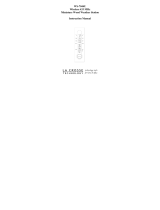 La Crosse Technology WS-7044UD User manual
La Crosse Technology WS-7044UD User manual
-
La Crosse Technology WS-7025U User manual
-
La Crosse Technology WS-7032UF User manual
-
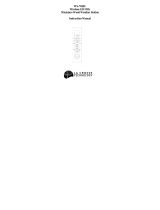 La Crosse Technology WS-7044U User manual
La Crosse Technology WS-7044U User manual
-
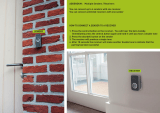 Mr Handsfree Wireless MP3 Doorbell Owner's manual
Mr Handsfree Wireless MP3 Doorbell Owner's manual
-
 La Crosse Technology WT-3131A User manual
La Crosse Technology WT-3131A User manual
-
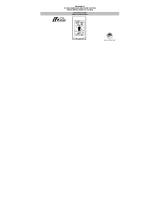 La Crosse Technology WS-9626U-IT User manual
La Crosse Technology WS-9626U-IT User manual
-
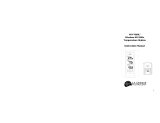 La Crosse Technology WS-7016U User manual
La Crosse Technology WS-7016U User manual
-
AcuRite 75322A1 User manual




























